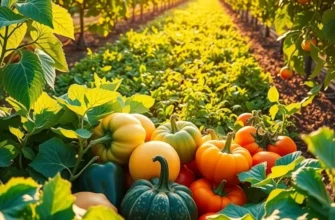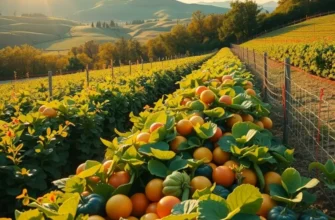Choosing eco-friendly cooking methods is pivotal for those passionate about making a positive impact on the environment. With simple adjustments in cooking practices, it’s possible to significantly reduce your ecological footprint while enjoying delicious meals. This guide explores innovative techniques that not only promote sustainability but also enhance the flavor and nutrition of your meals. By embracing these practices, you contribute to a healthier planet while enjoying the art of cooking.
Harnessing the Power of Plant-Based Cooking

Adopting a plant-based diet is more than a trend; it is a transformative approach to cooking that benefits both individuals and the environment. By emphasizing plant-derived ingredients, we can significantly reduce meat consumption, thereby lowering carbon emissions and conserving vital resources.
Transitioning to plant-based cooking starts with understanding the environmental impact of meat production. Livestock farming contributes to a substantial portion of global greenhouse gas emissions. By choosing to eat more plants, we effectively decrease the demand for such resource-intensive practices. Furthermore, plant-based foods typically require less water and land, leading to a more sustainable food system overall.
Diversifying our diet with plant-based options opens a world of flavors and nutritional benefits. Legumes, such as lentils and chickpeas, are not only protein-rich but also require fewer resources than animal-based proteins. Grains like quinoa offer all essential amino acids, providing complete protein without the ecological footprint of meat.
Adopting meat-free cooking techniques can amplify these benefits. Start by exploring meat alternatives like tofu or tempeh, which can absorb flavors and offer a similar texture to animal proteins. Moreover, mushrooms offer a umami punch that mimics the savory depth of meat, making them a favorite in many vegetarian meals.
Cooking methods like grilling or roasting can enhance the natural flavors of vegetables, creating hearty and satisfying meals. By creatively utilizing spices and herbs, a wide range of taste profiles can be achieved without relying on animal products. For those seeking inspiration, consider exploring easy plant-based eating for further guidance and meal ideas.
Batch cooking and meal prepping with plant-based ingredients can also contribute to a more sustainable kitchen environment. Preparing meals in advance reduces food waste by utilizing idle produce and encourages mindful ingredient usage. Coupled with proper storage, these practices can ensure longevity in your meal planning.
Experimentation is key to unlocking the full potential of plant-based cooking. Try incorporating a variety of textures by mixing raw, cooked, and fermented ingredients in your dishes. Fermented foods, like sauerkraut or kimchi, can add depth and probiotics, boosting gut health.
Finally, sharing plant-based meals with friends and family can foster community and further the cause of sustainable eating. Cooking workshops, potlucks, or simple dinners can be effective ways to inspire others to embrace this environmentally friendly approach.
As we shift towards a more socially and environmentally conscious way of dining, plant-based cooking stands as a powerful tool for positive change. By making mindful choices about the ingredients we consume, we can collectively promote health and sustainability for generations to come.
Energy-Efficient Cooking Techniques

Cooking efficiently is not just about saving energy but also about embracing techniques that add value to your meals and respect the planet’s resources. Pressure cooking is an exceptional method that shortens cooking times substantially, using high-pressure steam to tenderize food quickly while preserving nutrients. It is particularly useful for recipes requiring long braising times, such as stews and legumes, which can cook in significantly less time. This reduction in time directly translates to less energy usage, making your dishes not only healthier but eco-friendlier too.
Slow cooking, on the other hand, operates on the opposite principle by maintaining a low, consistent temperature over extended periods. Despite appearing energy-intensive at first glance, slow cookers use far less energy than traditional ovens due to their modest wattage. This technique excels with dishes that benefit from gentle simmering and can transform tougher meat cuts into tender delicacies. By planning meals that can cook throughout the day, you tap into a method that maximizes flavor while minimizing energy use.
Harnessing residual heat is another practical method that reduces energy consumption in the kitchen. After reaching the desired temperature, you can often turn off your stovetop or oven a few minutes early. The remaining heat will continue to cook your food to perfection. This technique is ideal for grains and pasta, allowing your cookware to do more with less.
Likewise, consider adapting recipes to utilize one-pot cooking techniques, which consolidate dish preparation into a single cooking vessel. This reduces both the cooking time and the number of appliances needed, capitalizing on energy efficiency and simplifying cleanup. Notably, one-pot dishes often blend flavors beautifully, offering an enriched dining experience.
Incorporating these methods within your cooking routine can lead to substantial energy savings and a smaller carbon footprint. Beyond technique, choosing energy-efficient kitchen appliances also contributes to eco-friendly cooking. Seek out utensils and equipment that are designed for conservation, and remember that well-maintained appliances operate more efficiently.
For those interested in integrating these methods within a broader kitchen strategy, explore this eco-smart kitchen storage guide. It offers insights into organizing and sourcing ingredients to complement sustainable cooking practices. By embracing these energy-efficient techniques and changes, you contribute towards a more sustainable future while enjoying nutritious and delicious meals.
Final words
Adopting climate-conscious cooking methods is not just about making personal choices—it’s about fostering a collective change. Every recipe crafted and ingredient chosen with care can lead to a more sustainable future. By integrating plant-based options and embracing energy-efficient techniques, you not only enjoy delectable dishes but also contribute to environmental health. Remember, small changes weave together to create significant impact. Start today, and encourage others to join in on the journey toward sustainable cooking and eating.








